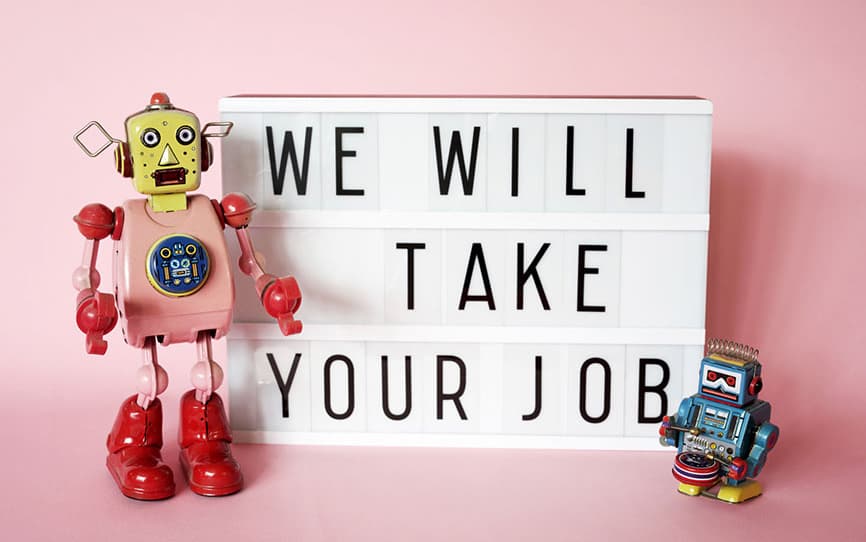WHS is an ever changing industry that will continue evolving throughout the next decade. Technology advancements, groundbreaking research and innovative ways of working have improved WHS in recent years and it’s showing no signs of slowing down.
SafeWork Australia collaborated with CSIRO to uncover six ‘megatrends’ that will shape the industry in the future. Let’s dive in and explore how they may impact you and your workplace this year.
1. Automation
A lot of people have been concerned about robots and artificial intelligence (AI) taking their jobs for several years now. While machines like autonomous trucks are replacing us, it’s not all doom and gloom.
Robots, artificial intelligence and drones are undertaking some of the monotonous or risky tasks that we do. Machines are tipped to unburden every Australian of two hours of manual or tedious work per week in the next decade. It’s also estimated that workplace injuries will fall by 11% by 2030 because of the reduction in manual work.
But automation isn’t just about sophisticated, expensive bots. Automation through software platforms is within the reach of the smallest businesses.
Many business owners see the value in automating a task of value that needs to be completed multiple times using a cloud-based software solution (like Epihub). Instead of doing repetitive processes like customer record-keeping, software takes that role leaving humans to do more complex tasks that offer more job satisfaction.
Employees should be at the heart of everything a business does. To ensure technology doesn’t displace workers, there needs to be redeployment opportunities, particularly for mature and vulnerable employees who may struggle to find work.
The loss of employment not only impacts them economically, but their mental health can also suffer. It’s paramount employees feel empowered in the workforce, and work in harmony with the systems put in place.
If you need advice on unlocking human potential at your workplace, give us a call.
2. Sedentary Working Lives
The way we worked 50 years ago is dramatically different to today. Today, Australian workers spend 76 percent of their time at work sitting – usually behind a desk – whereas in the past people moved all day doing physical work.
Research into sedentary work has dubbed ‘sitting the new smoking’. It has caused workers’ waistlines to increase over the past few decades and is linked to a number of health issues including cancer, diabetes and heart disease.
Employers are realising the importance of offering workers in sedentary roles alternative ways of working – like sit-stand desks. But before you kick your chair away, research shows that standing all day isn’t the best solution either; alternating between sitting and standing offers the most benefits.
Some workplaces are encouraging workers to include activity throughout their day to reduce the injuries and diseases associated with sedentary work. Walking meetings, taking the stairs instead of the lift and regular breaks from your desk is a good start.
Some companies are taking this a step further (pun fully intended) and offering health benefits such as gym discounts and lunchtime yoga classes. All together now: om…
3. Continued Focus on Mental Health
WHS focused on reducing the rate of workplace death and injuries for decades, but the last few years has seen a shift towards looking after workers’ mental health.
If you thought the sedentary stats were bad, you’re in for another shock: almost one in two Aussies will experience a mental illness in their lifetime.
But how much of that is work related? Well, between 2010–11 and 2014–15, around 91% of workers’ compensation claims involving a mental health condition were linked to work-related stress or mental stress – mental stress refers to the mechanism of injury describing work-related stress in the claims data.
Furthermore, a Government-funded Curtin University report found one in three FIFO workers experience high or very high levels of psychological distress.
So what can we do from a company perspective?
Creating a supportive environment is key. That can be offering access to support services, creating a culture where employees feel safe to talk to their peers and treating mental health as important as physical health.
Some companies are even offering mental health first aid training (MHFA). We’ve trained our WHS consultants in MHFA so they can identify when someone is suffering from a mental illness and know how to encourage them to seek professional help.
As the stigma around mental health continues to lift, we can only expect more businesses to put initiatives in place to nurture a mentally healthy workforce.
4. Working From Home
As more workers demand flexible working arrangements, more people are working from home.
A European Working Conditions Survey found employees who work from home either predominantly or partly had a better work-life balance and higher levels of job satisfaction.
But just because workers aren’t sitting in the office, it doesn’t mean employers aren’t required to provide a safe work environment. Employers are still responsible for health and safety issues and worker’s compensation of its employees whatever their location.
Because of this, employees may need training for working in the home environment compared to working in the office. In the office, they would move around regularly to interact with colleagues or attend meetings, but working from home they’re more likely to stay slouched on the sofa for hours on end.
In future, more employers may check their employees’ work environment within the home to make sure they’re using a quality desk and chair and not working from the dining table. They may need to check the lighting is appropriate with no screen glare issues and the environment is free of hazards such as cords that could be trip hazards and damaged electrical equipment that could cause an electric shock.
So if you’re thinking of working from home, you might want to hide your airing undies.
5. Gig Economy
The rise of the gig economy (task-based freelance work) is bringing with it some health and safety concerns. Websites like Airtasker invite people to bid on a task. While many of the tasks are basic, some should only be completed by people who have qualifications and experience.
In recent years, unions have found unlicensed operators taking on tasks like asbestos removal. A worker can tell a customer they’re a qualified electrician or plumber, but no one is checking these qualifications. A worker’s lack of experience means they aren’t capable of managing the risks, which not only puts their health at risk, but also the community’s.
Many gig economy workers aren’t covered by workers compensation, so if they injure themselves while working they may need to fund their medical costs and time off work. While the number of gig economy workers is relatively small in Australia, the rise of popular apps like Uber and Deliveroo could see the number of gig workers explode in future years.
Employers are also realising the benefits of gig economy workers to complete tasks they would have once used a full-time or part-time employee to do. Where the worker completes the task offsite, there is no one to ensure they complete the task using safe work practices.
In future, the WHS industry may require more compliance to ensure gig workers have access to workers compensation and they have the necessary qualifications or experience to do a task.
6. Ageing Workforce
Improved health + the increased pension age + high cost of living = people working for longer.
In the 10 years to 2015, the number of workers aged over 65 years increased by 13%. Mature employees have years of work and life experience, they have declining physical strength, cognitive abilities and speed. They aren’t as capable of physically demanding roles, and may need equipment to help with lifting and the option to sit part of the day where a younger worker may stand. Some jobs need redesigning to fit the needs of an older employee.
The highest rate of Aussie workers’ compensation claims for serious disease and injury in 2015-16 were for workers aged 45-54. Mature workers are also more likely to encounter bullying and age discrimination, which can impact their mental health.
However, we believe the issue here is not injuries, but losing ageing workers’ experience. Mature workers have a tremendous amount of experience and when they leave the workforce the industry is not documenting their experiences. To progress in WHS we need to develop more effective ways to capture the wealth of knowledge and key learnings to pass onto the next generation.
If you need help reshaping your WHS processes or planning for the future, get in touch today.


